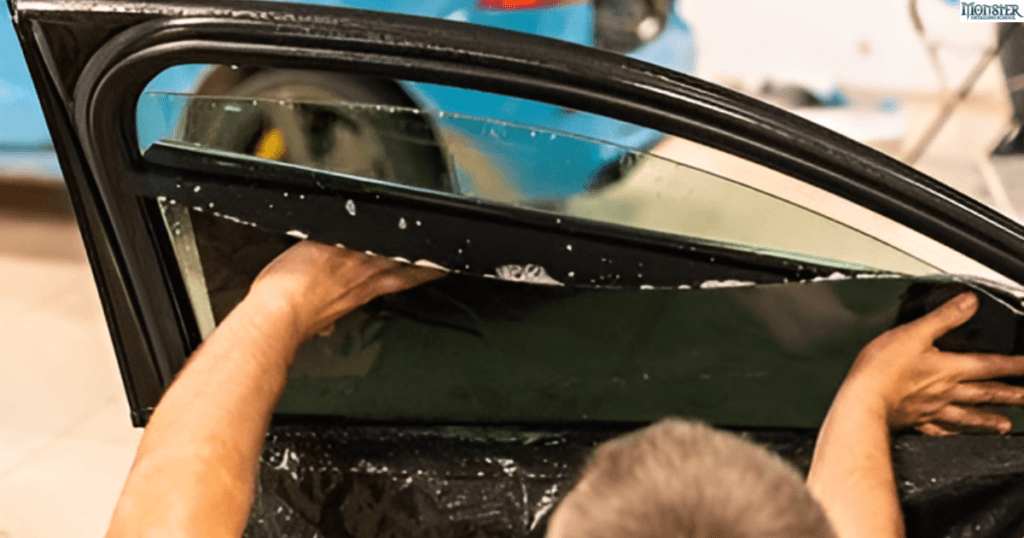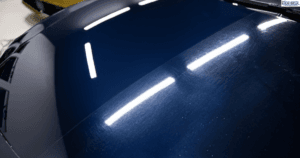If you’re exploring the art and science of window tinting—whether as an enthusiast or an aspiring professional—you’ve likely come across one essential question: does window tint go on the inside or the outside of car windows? The answer lies in both practicality and technique, and understanding this can make all the difference in the durability and performance of the tint.
At Monster Detailing School, we’re dedicated to equipping professionals with advanced skills and industry insights through our window tint training programs. This blog will walk you through the fundamentals of window tint application, highlighting why the inside installation is preferred and how this knowledge can help you succeed.
Window Tinting: Inside vs. Outside
The Preferred Method: Inside Application
The vast majority of window tinting is done on the inside of the window. Here’s why:
1. Protection from External Elements
The inside of a car window is a controlled environment. By applying tint film here, it is safeguarded against rain, dirt, dust, and harmful UV rays that could damage the adhesive and degrade the tint over time. This ensures the tint remains intact, looks great, and performs effectively for years.
2. Enhanced Durability
Window tint is a thin polyester film that can be vulnerable to wear and tear. External installation exposes it to cleaning agents, scratches, and environmental damage, while interior placement protects it from such risks.
3. Optimized UV Protection
Tint applied to the inside offers superior protection from UV rays. This ensures not only the longevity of the film but also shields passengers and interior materials from sun damage.
4. Improved Aesthetics
Interior installation results in a seamless, polished appearance. By placing the tint inside, professionals can avoid peeling edges and ensure the film adheres perfectly to the glass.
Related Blog: How Long Should You Wait to Roll Down Your Windows After Tinting?
What About Exterior Application?
While exterior tinting is possible, it is less common and typically used for temporary purposes or specialized projects. For instance, exterior application might be used in pre-cut designs to fit custom specifications, but it comes with significant drawbacks:
1. Exposure to the Elements:
Exterior tint films are far more likely to peel, bubble, or scratch due to environmental factors.
2. Frequent Maintenance:
Cleaning and maintaining exterior tints can be challenging, as abrasive cleaners and even car washes can cause damage.
3. Shortened Lifespan:
External tints degrade faster, making them less cost-effective for vehicle owners.
The Process of Window Tinting

Understanding the proper process of window tinting is essential for achieving professional results. Here’s a quick overview:
1. Preparation
- Clean the window thoroughly to remove all dirt, grease, and debris.
- Measure and cut the tint film to fit the dimensions of the window.
2. Application
- Roll down the window slightly to ensure the tint covers the entire surface.
- Carefully apply the tint to the interior surface, starting at the bottom and working upwards.
- Use a squeegee to remove bubbles and ensure smooth adhesion.
3. Finishing Touches
- Heat the edges with a heat gun to ensure the film adheres securely.
- Trim any excess film to achieve a clean, professional look.
If you are interested to know the process in detail check out our blog on how long does the window tinting process take?
Why Invest in Professional Window Tint Training?
Window tinting is both an art and a science, requiring a blend of technical expertise and practical skills. For those entering the detailing industry, professional training can make all the difference in achieving success. Here’s how:
1. Master Advanced Techniques
Learn the nuances of tint application, including how to tackle complex shapes and avoid common issues like bubbling or uneven edges. Our training programs emphasize precision and efficiency, ensuring you can deliver high-quality results.
2. Understand Best Practices
From choosing the right film to complying with local regulations, professional training equips you with the knowledge needed to meet customer expectations and ensure long-term satisfaction.
3. Build Confidence and Credibility
Earning a certification from a recognized program like Monster Detailing School demonstrates your commitment to excellence. This not only enhances your credibility but also gives clients confidence in your skills.
4. Access to Cutting-Edge Tools
Our training programs introduce students to the latest tools and technologies, helping them stay ahead of industry trends.
Final Thoughts
When it comes to window tinting, understanding the difference between inside and outside application is crucial—not just for delivering superior results but also for building trust with your clients. At Monster Detailing School, our goal is to help you master this craft and position yourself as a leader in the industry.
If you’re ready to take your skills to the next level, our window tint training classes are the perfect place to start. With expert guidance, hands-on practice, and a focus on best practices, you’ll gain the knowledge and confidence to excel.
Found this blog helpful? Check out other related blogs as well:










